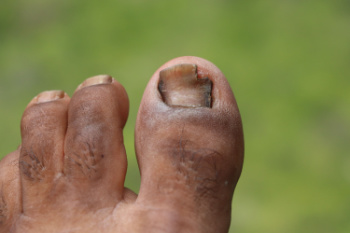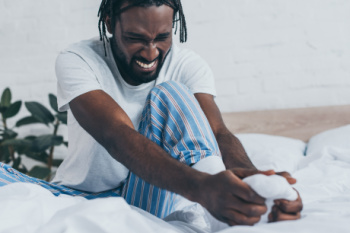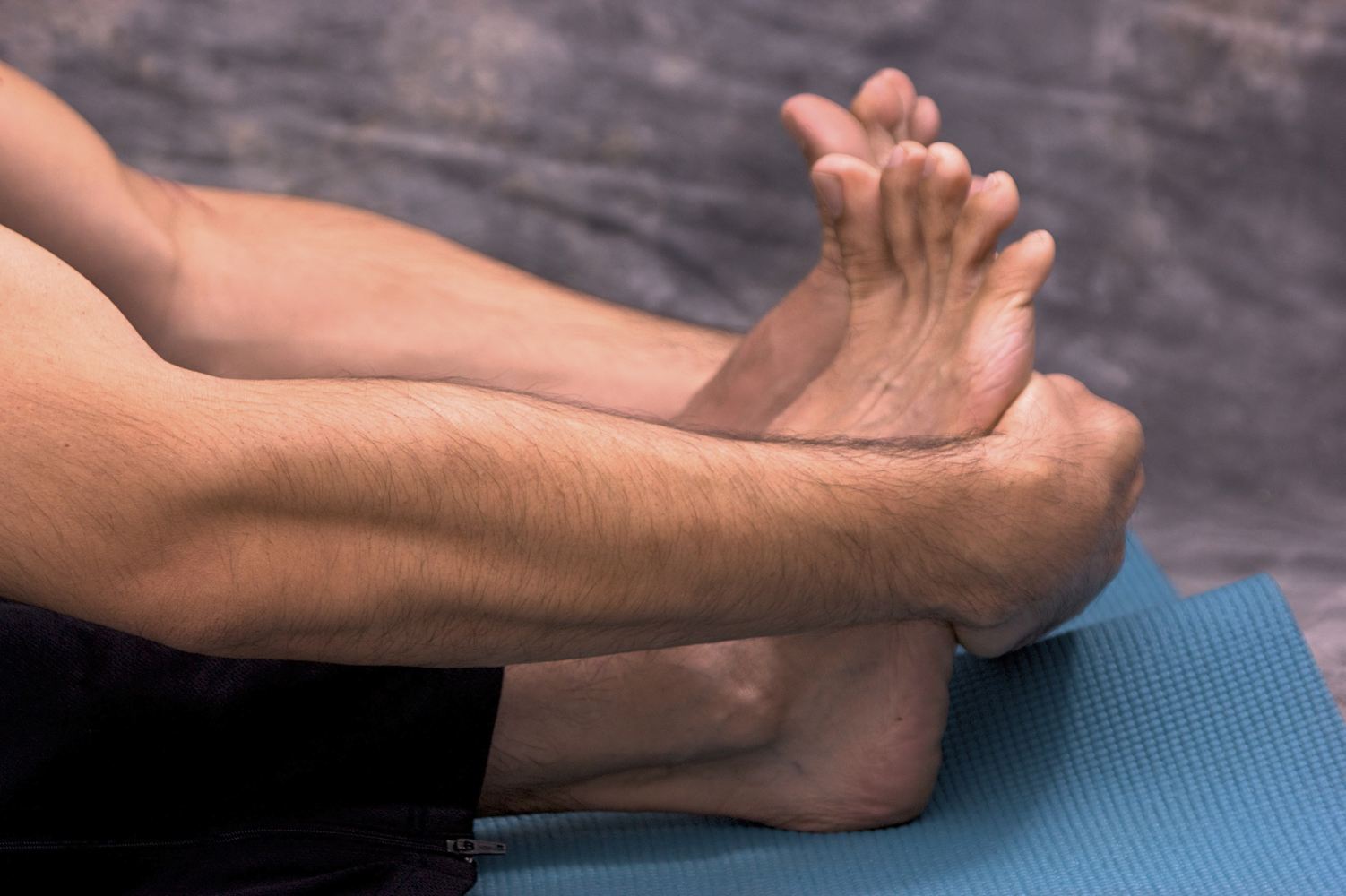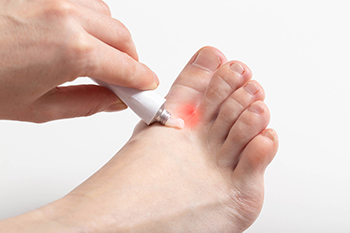Items filtered by date: August 2024
It's Time for Beautiful Feet
How Diabetes Can Impact Toenails

Diabetes can significantly affect toenails, leading to various complications. One common issue is diabetic foot syndrome, where poor circulation and nerve damage result in slow healing and increased risk of infections. This condition can worsen problems like ingrown toenails, where the toenail grows into the surrounding skin, causing pain and potential infection. Diabetics are also prone to toenail fungus, which leads to discolored, thickened, and brittle nails. To manage these issues, it is essential to practice good foot hygiene, including regular nail trimming and keeping feet clean and dry. Wearing well-fitting shoes and monitoring any changes in toenails promptly can help prevent complications and maintain foot health. If you have diabetes, it is strongly suggested that you are under the care of a podiatrist who can help you to manage this condition, in addition to monitoring toenail health.
For more information about treatment, contact Edward Sharrer, DPM of Premier Foot and Ankle Clinic. Our podiatrist can provide the care you need to keep you pain-free and on your feet.
Toenail Fungus Treatment
Toenail fungus is a condition that affects many people and can be especially hard to get rid of. Fortunately, there are several methods to go about treating and avoiding it.
Antifungals & Deterrence
Oral antifungal medicine has been shown to be effective in many cases. It is important to consult with a podiatrist to determine the proper regiment for you, or potentially explore other options.
Applying foot powder on the feet and shoes helps keep the feet free of moisture and sweat.
Sandals or open toed shoes – Wearing these will allow air movement and help keep feet dry. They also expose your feet to light, which fungus cannot tolerate. Socks with moisture wicking material also help as well.
If you have any questions please feel free to contact our office located in North Little Rock, AZ . We offer the newest diagnostic tools and technology to treat your foot and ankle needs.
Foot Pain Can Indicate Arthritis

Foot pain can be more than just a temporary inconvenience, especially if it is persistent or linked to activities like sports or standing at work for long periods of time. This pain might actually signal arthritis, an inflammatory condition that becomes more likely as cartilage deteriorates and feet flatten with age or weight gain. Arthritis in the feet often arises from osteoarthritis, which wears down joint cartilage, or from rheumatoid arthritis, which inflames and damages joints. Psoriatic arthritis and gout can also lead to significant foot or toe pain. Each of these conditions can cause swelling, stiffness, and alterations in foot structure, which can radiate pain to other body parts. Treatment of arthritic foot pain often focuses on taking certain medication and maintaining mobility through weight management and physical activity. Consulting a podiatrist is essential for a personalized treatment plan, including custom orthotics to support the feet and maintain proper alignment. If you experience chronic pain in the feet or ankles, it is suggested that you schedule an appointment with a podiatrist for a diagnosis and treatment options.
Arthritis can be a difficult condition to live with. If you are seeking treatment, contact Edward Sharrer, DPM from Premier Foot and Ankle Clinic. Our podiatrist can provide the care you need to keep you pain-free and on your feet.
Arthritic Foot Care
Arthritis is a term that is commonly used to describe joint pain. The condition itself can occur to anyone of any age, race, or gender, and there are over 100 types of it. Nevertheless, arthritis is more commonly found in women compared to men, and it is also more prevalent in those who are overweight. The causes of arthritis vary depending on which type of arthritis you have. Osteoarthritis for example, is often caused by injury, while rheumatoid arthritis is caused by a misdirected immune system.
Symptoms
- Swelling
- Pain
- Stiffness
- Decreased Range of Motion
Arthritic symptoms range in severity, and they may come and go. Some symptoms stay the same for several years but could potentially get worse with time. Severe cases of arthritis can prevent its sufferers from performing daily activities and make walking difficult.
Risk Factors
- Occupation – Occupations requiring repetitive knee movements have been linked to osteoarthritis
- Obesity – Excess weight can contribute to osteoarthritis development
- Infection – Microbial agents can infect the joints and trigger arthritis
- Joint Injuries – Damage to joints may lead to osteoarthritis
- Age – Risk increases with age
- Gender –Most types are more common in women
- Genetics – Arthritis can be hereditary
If you suspect your arthritis is affecting your feet, it is crucial that you see a podiatrist immediately. Your doctor will be able to address your specific case and help you decide which treatment method is best for you.
If you have any questions, please feel free to contact our office located in North Little Rock, AZ . We offer the newest diagnostic and treatment technologies for all your foot care needs.
Exercises for Healthier Feet

Regular foot exercises are essential for maintaining healthy feet, improving circulation, and enhancing flexibility in the feet, ankles, and calves. Start with circulation stretches while seated, by flexing and pointing your toes, moving them side to side, and rotating them in circles. Perform 10 repetitions on each side. Next, the towel foot stretch targets your calf and foot muscles. Sit on the floor, wrap a towel around the bottom of your foot, and use it to flex and point your toes against resistance. For a deeper stretch, bend your knee outward and pull your foot toward you. Repeat 10 times on each side. Lastly, try the calf and foot stretch. Lie on your back with your knees bent, loop a towel around your foot, and gently pull it toward you while keeping your knee slightly bent. Hold this stretch for 20 seconds on each side. Regularly practicing these foot exercises can significantly benefit your foot health. If you need guidance on foot exercises, it is suggested that you schedule an appointment with a podiatrist for an evaluation.
Exercising your feet regularly with the proper foot wear is a great way to prevent injuries and build strength. If you have any concerns about your feet, contact Edward Sharrer, DPM from Premier Foot and Ankle Clinic. Our podiatrist can provide the care you need to keep you pain-free and on your feet.
Exercise for Your Feet
Exercise for your feet can help you gain strength, mobility and flexibility in your feet. They say that strengthening your feet can be just as rewarding as strengthening another part of the body. Your feet are very important, and we often forget about them in our daily tasks. But it is because of our feet that are we able to get going and do what we need to. For those of us fortunate enough to not have any foot problems, it is an important gesture to take care of them to ensure good health in the long run.
Some foot health exercises can include ankle pumps, tip-toeing, toe rises, lifting off the floor doing reps and sets, and flexing the toes. It is best to speak with Our podiatrist to determine an appropriate regimen for your needs. Everyone’s needs and bodies are different, and the activities required to maintain strength in the feet vary from individual to individual.
Once you get into a routine of doing regular exercise, you may notice a difference in your feet and how strong they may become.
If you have any questions please feel free to contact our office located in North Little Rock, AZ . We offer the newest diagnostic and treatment technologies for all your foot and ankle needs.
Treatment and Prevention of Athlete’s Foot
 Athlete's foot, or tinea pedis, is a common fungal infection affecting the skin on the feet. It typically causes a red, itchy, and scaly rash, often starting between the toes. The condition thrives in warm, moist environments, making locker rooms, swimming pools, and communal showers common places for contraction. Athlete's foot occurs when the fungus comes into contact with the skin and finds favorable conditions to grow, such as damp socks or shoes. Symptoms include itching, burning, peeling skin, and in severe cases, blisters or ulcers. For mild cases of athlete's foot, antifungal creams, powders, or sprays may be effective. Keeping feet clean and dry is essential, as is changing socks regularly and wearing breathable footwear. Preventative measures include using shower sandals in public areas, thoroughly drying feet after washing, and avoiding sharing towels or shoes. If symptoms of athlete's foot persist or worsen despite treatment, it is suggested that you schedule an appointment with a podiatrist.
Athlete's foot, or tinea pedis, is a common fungal infection affecting the skin on the feet. It typically causes a red, itchy, and scaly rash, often starting between the toes. The condition thrives in warm, moist environments, making locker rooms, swimming pools, and communal showers common places for contraction. Athlete's foot occurs when the fungus comes into contact with the skin and finds favorable conditions to grow, such as damp socks or shoes. Symptoms include itching, burning, peeling skin, and in severe cases, blisters or ulcers. For mild cases of athlete's foot, antifungal creams, powders, or sprays may be effective. Keeping feet clean and dry is essential, as is changing socks regularly and wearing breathable footwear. Preventative measures include using shower sandals in public areas, thoroughly drying feet after washing, and avoiding sharing towels or shoes. If symptoms of athlete's foot persist or worsen despite treatment, it is suggested that you schedule an appointment with a podiatrist.
Athlete’s foot is an inconvenient condition that can be easily reduced with the proper treatment. If you have any concerns about your feet and ankles, contact Edward Sharrer, DPM from Premier Foot and Ankle Clinic. Our podiatrist will treat your foot and ankle needs.
Athlete’s Foot: The Sole Story
Athlete's foot, also known as tinea pedis, can be an extremely contagious foot infection. It is commonly contracted in public changing areas and bathrooms, dormitory style living quarters, around locker rooms and public swimming pools, or anywhere your feet often come into contact with other people.
Solutions to Combat Athlete’s Foot
- Hydrate your feet by using lotion
- Exfoliate
- Buff off nails
- Use of anti-fungal products
- Examine your feet and visit your doctor if any suspicious blisters or cuts develop
Athlete’s foot can cause many irritating symptoms such as dry and flaking skin, itching, and redness. Some more severe symptoms can include bleeding and cracked skin, intense itching and burning, and even pain when walking. In the worst cases, Athlete’s foot can cause blistering as well. Speak to your podiatrist for a better understanding of the different causes of Athlete’s foot, as well as help in determining which treatment options are best for you.
If you have any questions please feel free to contact our office located in North Little Rock, AZ . We offer the newest diagnostic and treatment technologies for all your foot and ankle needs.




